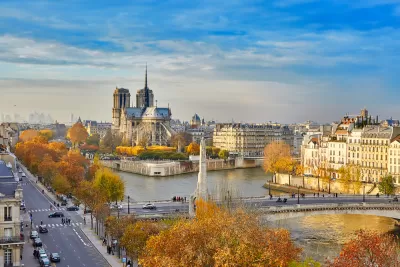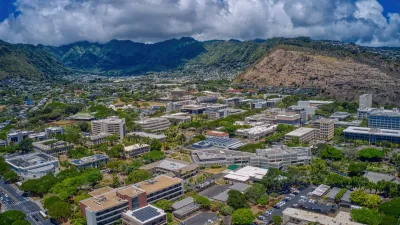Ironically, some of the greatest architecture of the past came from the most nefarious of sources: monarchies and dictatorships. Democratic design, though, can be bland and generic. What of design in our new undemocratic age?

"The trouble is, recent history suggests that (Francis) Fukuyama’s theory (about the ascension of democracy) faces peril, if not outright obliteration. What this world will look like—figuratively and literally—in a generation or two is anyone’s guess. So much for the architecture of democracy. But the continuing process of democratization, and the process of its undoing, has deep implications for actual architecture."
"In my travels to places that have fulfilled Fukuyama’s vision—often heroically—I cannot help but feel a certain lament. While I would never trade freedom for anything as petty as aesthetics (or for anything else, for that matter), I fear that the free world may never again see the type of greatness that those old kings and bishops wrought."
"While history has yet to judge their artistic merit, the autocratic design tradition lives on in Dubai, Baku, and the metropolises of China. Those places are building moments that are superficially distinctive, mostly in the form of high-rises and other places so much larger than life that they seem more grotesque than inspiring. Notre Dame invokes awe at a human scale, as rich in detail as it is impressive in its engineering. The bright skyline of Doha, endless superblocks of Beijing, and odd follies of Baku, do no such thing."
"Many ascendant autocracies are enlisting western architects to build their monuments, in part because they do not have domestic talent capable of slaking their thirst for superlatives. They end up with a sort of cosmopolitan capitalist authoritarianism, in which nations spare no expense to create placelessness."
FULL STORY: Kings, Despots, Dictators, Cities and the End of History

Alabama: Trump Terminates Settlements for Black Communities Harmed By Raw Sewage
Trump deemed the landmark civil rights agreement “illegal DEI and environmental justice policy.”

Planetizen Federal Action Tracker
A weekly monitor of how Trump’s orders and actions are impacting planners and planning in America.

Why Should We Subsidize Public Transportation?
Many public transit agencies face financial stress due to rising costs, declining fare revenue, and declining subsidies. Transit advocates must provide a strong business case for increasing public transit funding.

Understanding Road Diets
An explainer from Momentum highlights the advantages of reducing vehicle lanes in favor of more bike, transit, and pedestrian infrastructure.

New California Law Regulates Warehouse Pollution
A new law tightens building and emissions regulations for large distribution warehouses to mitigate air pollution and traffic in surrounding communities.

Phoenix Announces Opening Date for Light Rail Extension
The South Central extension will connect South Phoenix to downtown and other major hubs starting on June 7.
Urban Design for Planners 1: Software Tools
This six-course series explores essential urban design concepts using open source software and equips planners with the tools they need to participate fully in the urban design process.
Planning for Universal Design
Learn the tools for implementing Universal Design in planning regulations.
Caltrans
Smith Gee Studio
Institute for Housing and Urban Development Studies (IHS)
City of Grandview
Harvard GSD Executive Education
Toledo-Lucas County Plan Commissions
Salt Lake City
NYU Wagner Graduate School of Public Service




























